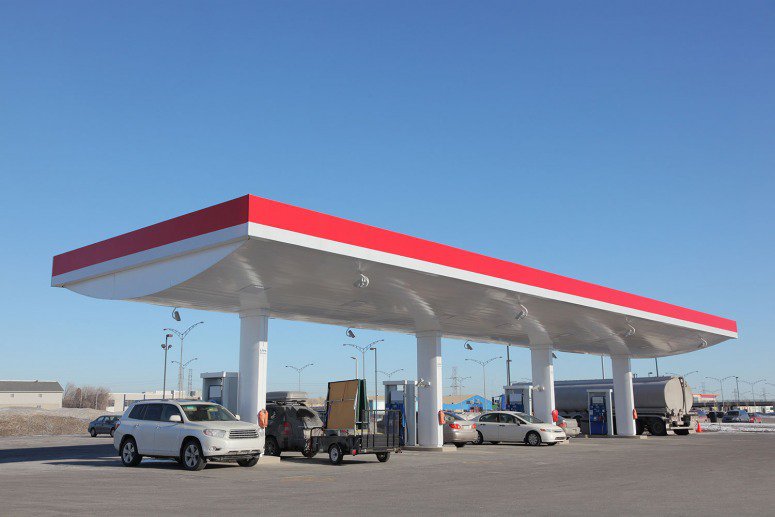New insight on how consumers adjust purchase decisions when gas prices change can help predict how policy shifts will impact overall US vehicle fuel efficiency and GHG emissions.

Every year, roughly 16 million new cars and light trucks are sold in the United States. Vehicles account for about one-fifth of all US greenhouse gas (GHG) emissions, making the transportation sector a focus of national and state-level policies aimed at improving air quality and reducing emissions nationwide that contribute to climate change. Of those 16 million vehicles, almost 20 percent are considered “fleet” vehicles—those purchased by rental car companies and others in the private sector for commercial use, as well as by governments across local, state, and federal levels. Fleet vehicles are distinct from cars and trucks purchased by households in the retail market in that fleet buyers have requirements for vehicle features such as type, size, and fuel economy that likely differ from considerations made by household buyers. Understanding these differences can help improve the design and evaluation of policies that have the potential to reduce fuel consumption and GHG emissions from the US car and light truck fleet as a whole.
Household and fleet buyers each purchase more trucks and SUVs and fewer small vehicles after gasoline prices fall.
Author
But policy design and evaluation here are challenged by a lack of empirical analysis. Despite the fact that fleet vehicle purchases account for a relatively large share of new car and truck sales each year, little evidence exists on how these big buyers make decisions about adding new vehicles to their fleets. We recently examined differences in vehicle types and buyer motivation across fleets and households, and assessed how changes in fuel prices affect decisions about new vehicle fuel economy for both groups.
Rental car companies purchase the largest share by far of total fleet vehicles sold each year in the United States—about 86 percent. They buy similar types of vehicles compared to households but purchase at high volumes directly from manufacturers, with less variation in makes, models, and trim levels. Another difference worth noting is that rental car companies purchase relatively fewer pickup trucks, which make up an important segment of the US retail market for household buyers. Consumers in commercial and government sectors tend to select from a limited set of vehicles, with particular features that suit specific needs. The demand for larger vehicles is higher among these buyers, who need specially designed vans and trucks for use across a range of sectors, including construction, aviation, delivery, and public utilities. They also use light-duty vehicles (e.g., for sales in the commercial sector, and state and local government work). Commercial and government fleet managers are also more likely to buy vehicles produced domestically. US federal, state, and local government vehicles in particular—purchased with taxpayer dollars—are expected or required to be produced by domestic manufacturers. Broadly, these specialized needs and constraints influence which vehicles fleet managers in the United States decide to buy and how they make those choices based on varying conditions.

Over time, increasingly stringent fuel economy standards for light-duty vehicles (implemented beginning with the 2012 model year) should result in better fuel economy and lower GHG emissions from both household and fleet vehicles. However, less rigid standards for trucks than for cars as well as declining fuel prices appear to be compromising these outcomes. In fact, average fuel economy for cars and light trucks has fallen slightly, since reaching a high of close to 26 miles per gallon in 2014. Flat fuel economy—despite stricter standards—is likely due to falling gasoline prices over the last three years. Consumers have responded to lower gas prices by shifting to larger, less fuel–efficient vehicles with standards that permit lower fuel economy (mpg) and higher GHG emissions. The move toward larger vehicles, including pickup trucks and sport utility vehicles (SUVs) is well documented for the household sector—but have buyers of fleet vehicles in the United States responded to low gasoline prices in the same way?
Our results indicate that the answer is yes. To examine the question, we analyzed unique data on new vehicle registrations for both fleet and household buyers from 2009 to 2016, finding that both groups respond to fuel price changes in similar ways. Household and fleet buyers each purchase more trucks and SUVs and fewer small vehicles after gasoline prices fall; we also see similarity in the magnitude of their responses. Figure 1 shows gasoline prices and vehicle market shares over time for fleet vehicles in the car and light truck segments. The light truck segment includes most SUVs and many crossover vehicles. Since gasoline prices started to fall in the third quarter of 2014, the market share for larger vehicles in the light truck segment has been growing rapidly.
Figure 1. New Vehicle Registrations by Fleet Buyers (2009–2016)

One explanation for these results relates to an earlier point about rental car companies—recall that they make up the majority of fleet vehicles in the United States, accounting for 86 percent of all fleet vehicles purchased each year. Rental car companies sell their vehicles after only about one to two years of ownership. Because used car prices tend to account for future fuel costs, especially for vehicles in their first few years on the road, we expect rental car companies to consider fuel economy as a key determinant when they purchase new vehicles. If rental companies assume that buyers in used car markets capitalize these costs based on current gasoline prices (and there is evidence indicating that households tend to do this), they would then rationally care less about fuel costs when gas prices are low and opt to buy more large vehicles such as SUVs and pickup trucks.
What are the implications of this story? Fleet buyers have diverse vehicle needs and uses compared to households in the US vehicle market—and despite the differences, they appear to respond in a similar manner as households to falling gasoline prices. This contributes to the problem of flat or declining fuel economy on the road overall in the United States, as buyers across all sectors of the economy adjust new vehicle purchase decisions in light of recent decreasing and low gasoline price trends. Looking ahead, the results of our study can also be used to help better predict how different policy tools, such as gasoline or carbon taxes, may impact overall US vehicle fuel economy and greenhouse gas emissions.









